Friends and Family 1993-1999
  “Dress my friends up, Just for show. See them as they really are” “Dress my friends up, Just for show. See them as they really are”
From 2004-2012, I rarely
used, and didn’t own, a camera,
not even on
a cell phone, and not just because I don't use a cell phone.
That’s
not remarkable by itself, but it is just a little bit strange,
considering that I was a professional photographer for
several years, as well as an obsessive, even complusive,
phototographer, since I as 14. David LaChapelle once said to me, at a
party, after seeing
my
photographs, “Wow. You really are
good,” which was a short but wonderful compliment, from the
highest paid photographer in the world. Now, the act of holding a
camera feels like a reunion with my first love.
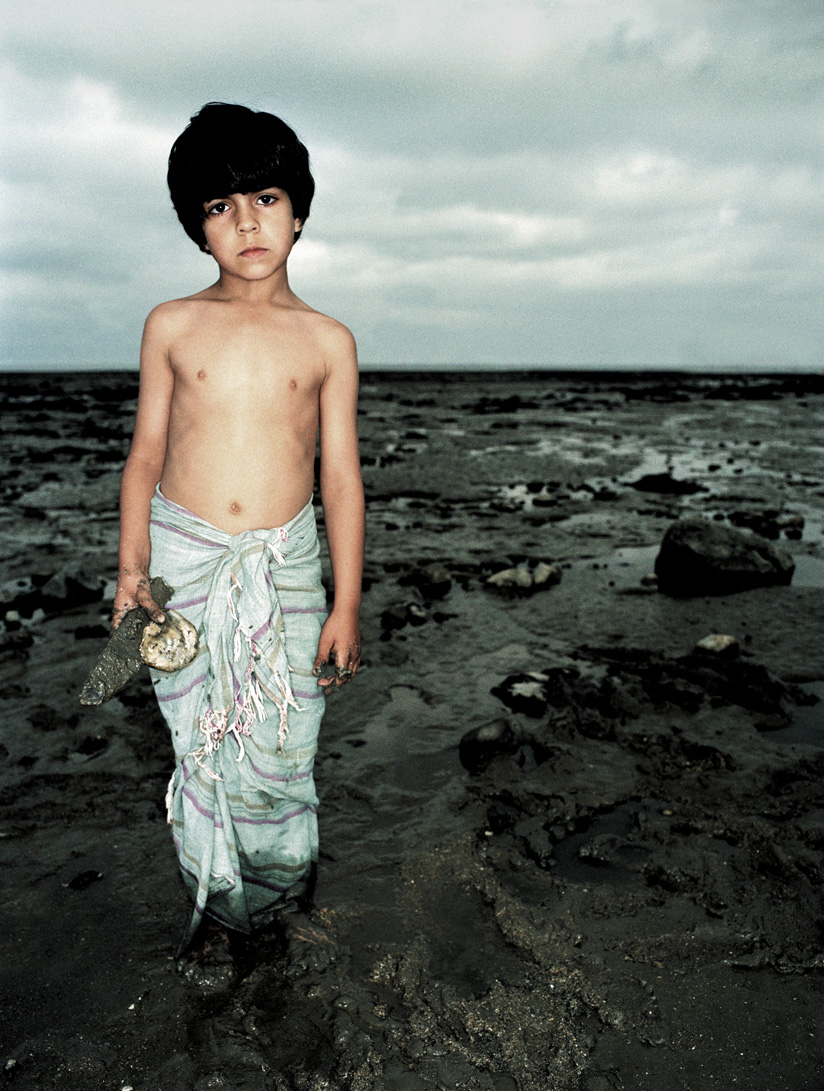
Luke, my brother, (b. 1989, d. 2006), Wales. Home-made
flash, C-41 film, E-6 chemistry, 1994
I started
taking photographs before the age of digital photography, in
1990. I was 14 years old, and spontaneously had the desire to
photograph
anything and everything. My first camera cost £20 ($30) brand
new. It was a Russian Lubitel 166U,
and as inexpensive as it was, it still used medium format film (much
larger
than 35mm) and produced excellent images. Medium format cameras were
specialized and most of them cost thousands of dollars. This camera
definitely had some idiosyncrasies for its very reasonable price tag.
but it was
perfect for any keen student of photography, and helped me to gain
awareness of every aspect of the photographic process.
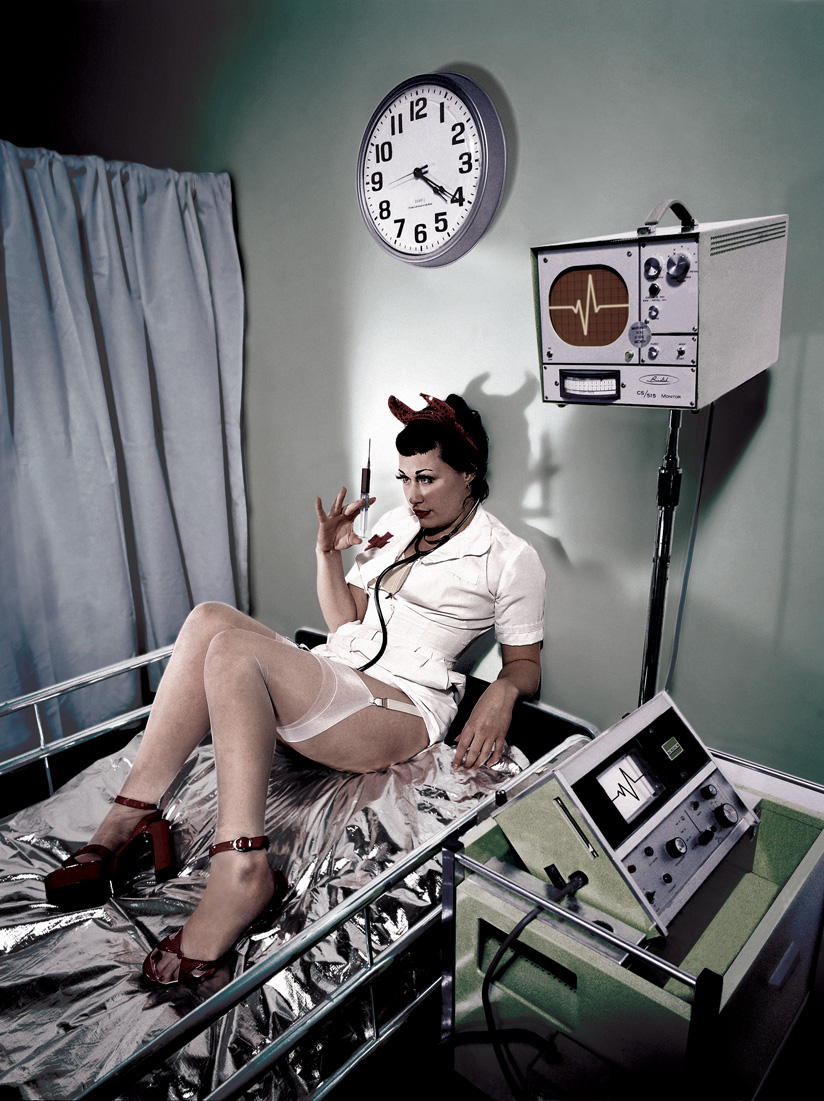
Sarah, my wife, clothes designer, Hollywood DJ. Medium
format transparency, 1997
The 166U was
entirely
mechanical, so it required no batteries, which also
meant that light needed to be measured with a seperate light meter. All
the controls needed to be operated manually, and the film needed
to be loaded in the dark for best results. The winding on the film had
to be ‘remembered’ and the amount of winding needed
to be judged, by using
a tiny red plastic window that allowed you to see the advancing of the
film. This meant that some pictures could overlap on the negative roll,
or in
cases of forgetfulness or confusion, be unintentionally double exposed.
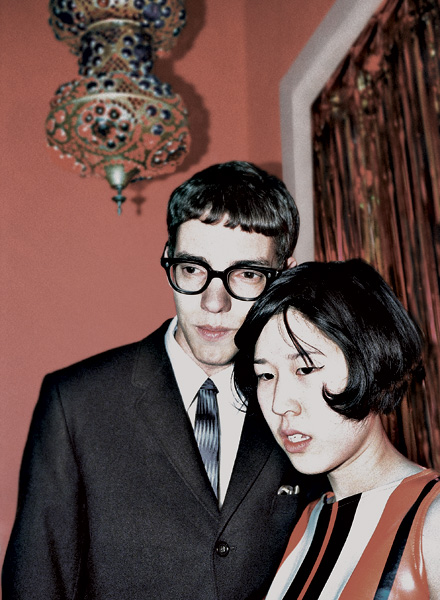
Adrian
and Joyce, super-hipsters, Melrose, Hollywood. 35mm transparency, 1999
I used to
develop the exposed rolls of film at home, using chemicals
that could only smell good to those that truly loved photography. After
I had hung the negatives to dry just like laundry, and they were flat
and smooth with no wrinkles or water stains (which would mean that
they hadn’t been rinsed properly), I would make prints from
the
negatives using an old rusty enlarger (bought from a thrift store, also
for £20),
using more even chemicals. I could only print at night, when there was
no daylight to leak through the kitchen windows, which I covered with
blankets and tape.
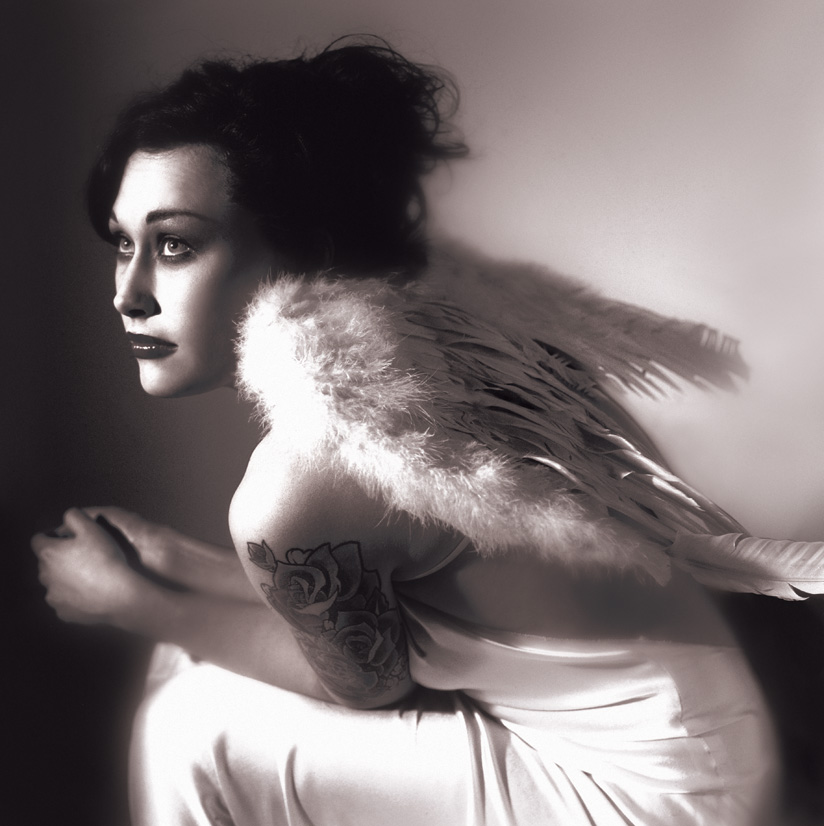
Sarah, my wife. Medium format transparency, 1999
Before the
days of Photoshop, most images would still need to be corrected or
‘enhanced.’ Even if there were no water stains,
scratches or dust on the transparency or negative, a picture
would rarely come out perfectly the first time. Controlling of contrast
was
done using colored filters, or using different grades of paper. Light
and dark areas of prints needed to be balanced or compensated, using
the
darkroom operator’s skills with shadow puppertry and creative
mask
making. Whenever I had been developing and printing photographs
through the night, by the
morning, the house was filled with a web of clothes lines, with drying
photographs hanging from them. It was a long and involved process, and
I loved every minute of it.
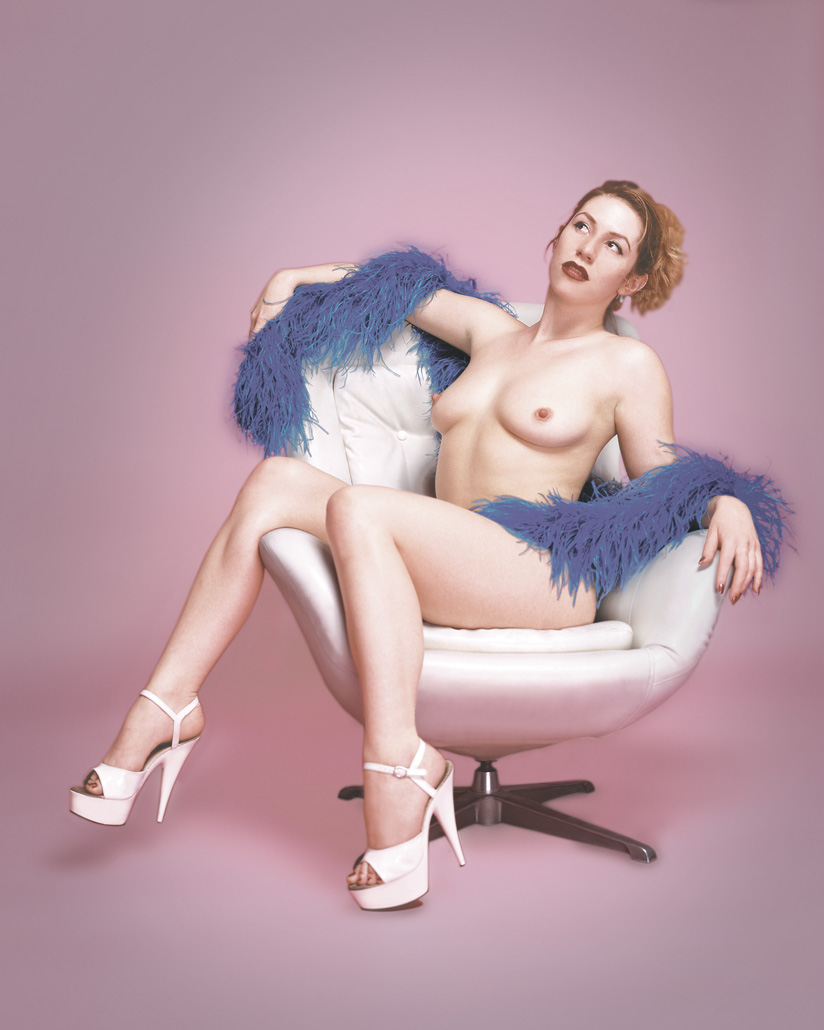
Cimmi, Hollywood dancer, doll designer. Medium format
transparency, 1997
At 14 years
old, my school became my first clients.
For every school event, sports team, play, and group
portrait, I took photographs, developed the film, and sold prints to
every
person, in every picture, making money from every print sold. At 15
years
old,
I was comissioned to produce all the pupils’ year
photographs, and even
a portrait of the headmaster in his office. By that time I had
graduated to using a more professional camera, and I would use full
studio
lighting on location. At 16, I went to college to study photography and
design, and I worked as a photographic assistant to a commercial studio.
I photographed everything that needed photographing in the
industrial city of Birmingham (England’s Detroit) for
print advertising and editorials: widgets, washers,
screws, oil-filters, microchips, springs, cars,
car parts, guns, tanks, and
even the machines that produce them all. Everything and anything that
was manufactured also needed photographing.
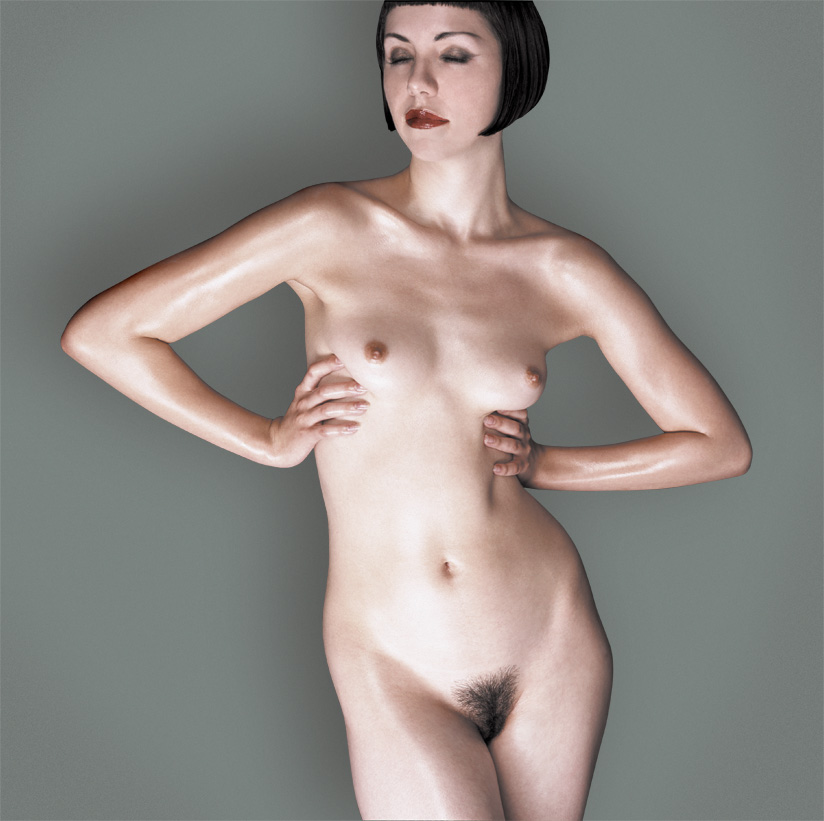
Daisy
(Cimmi’s sister). Medium format transparency,
1997
I became a
professional photographer, which served
me well and paid the bills for several years to come, until
the popularisation
of an invention that had been simmering in the background, which
had previously never been connected to my world of photography. The
powers
and abilities of personal computers
were increasing exponentially. So far, they had only been useful for
games and word processing, so I had paid them little
to no attention. The first time I saw a photo-realistic
image displayed
on a computer monitor, I started paying them close attention.
I’d never seen
anything like it before. They would soon create a
new way of expressing
ideas and creativity, as well as a whole new industry. All
the jobs
which had previously been done seperately by the art directors,
photographers, illustrators, typesetters and print makers could now
be done by one person, with one vision.
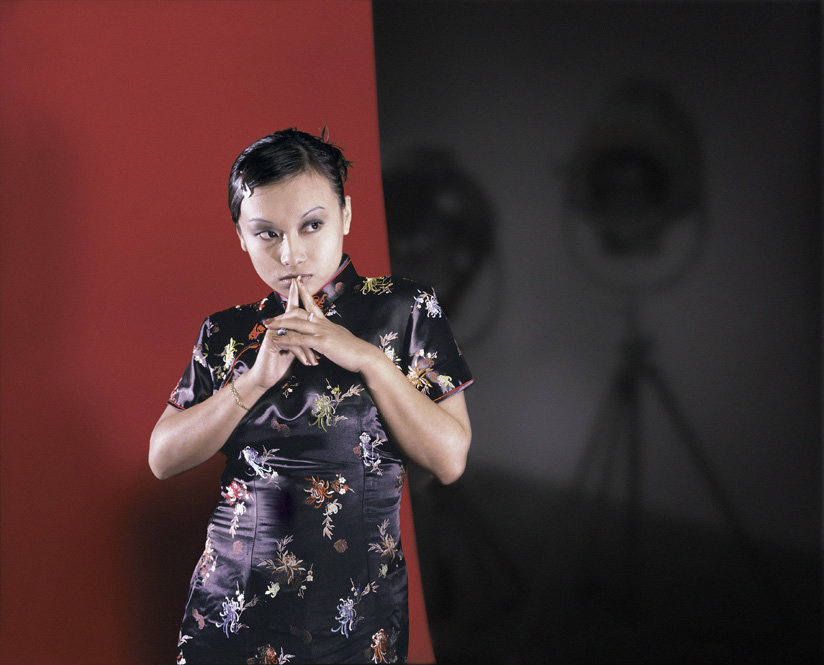
Veronica, Hollywood triad. Medium format transparency, 1998
By
1997, personal computers were powerful enough, affordable enough, and
ubiquitous
enough to have established all new standards in publishing and the
print
production industry (though it was a while longer before digital
cameras were to do the same). I wanted to be a part of it, and so I
became a freelance graphic
designer, which would serve me well and pay the bills for
another
several years.
I would also now be able to utilize
the same tool set for every business endeavor and task after that, to
be able to communicate ideas and concepts quickly and efficiently.
 Jasmine,
Hollywood local. Medium format transparency, 1997 Jasmine,
Hollywood local. Medium format transparency, 1997
Photography
has
been democratized, and after multiple digital
revolutions, the photograph has become more relevant now than
ever. Photography has turned from an esoteric black art, only
commandable by the hands of a few, into a social activity we engage
in every day, for which no special thought or consideration is
required. Easy or not, those pictures can still be beautiful, moving,
and powerful. This is a time
when a good photograph will travel the world on its merits alone.
Selfishly, of course, I do feel just a little nostalgic for the days
when it was difficult, and complicated, and those of us that knew how
to command the tools felt special.
|









 Jasmine,
Hollywood local. Medium format transparency, 1997
Jasmine,
Hollywood local. Medium format transparency, 1997